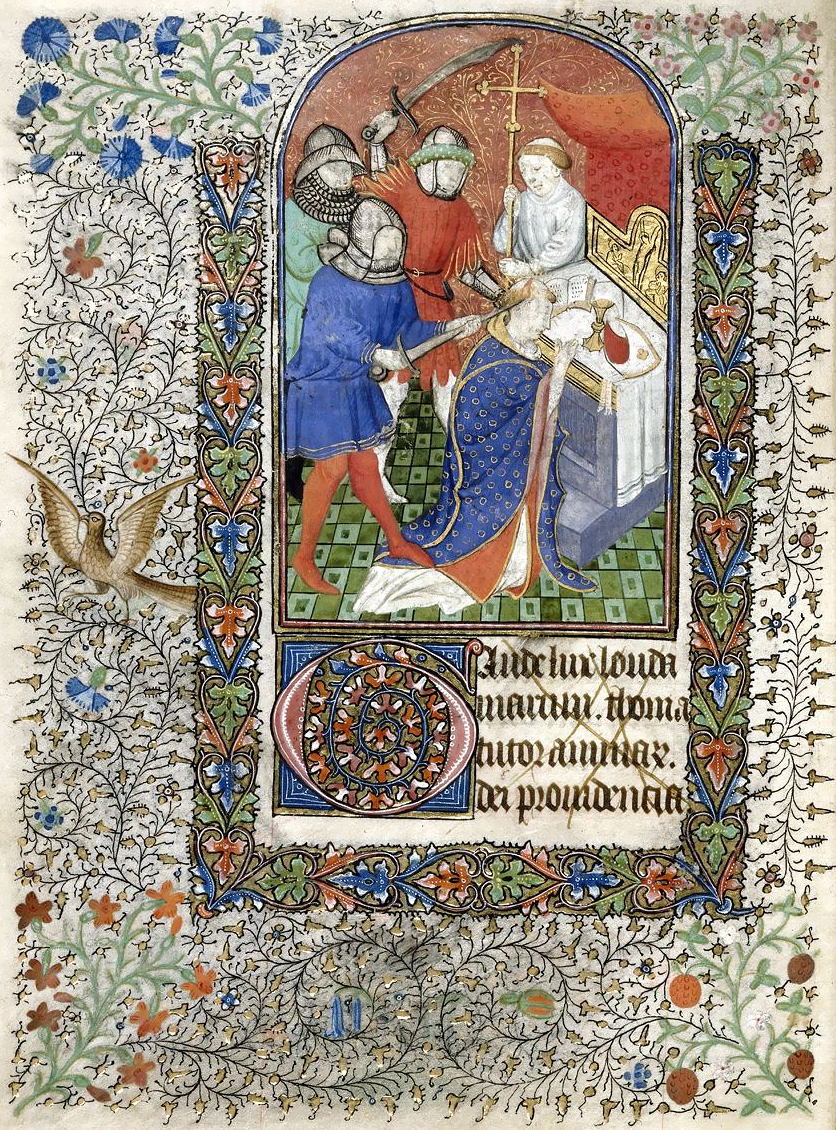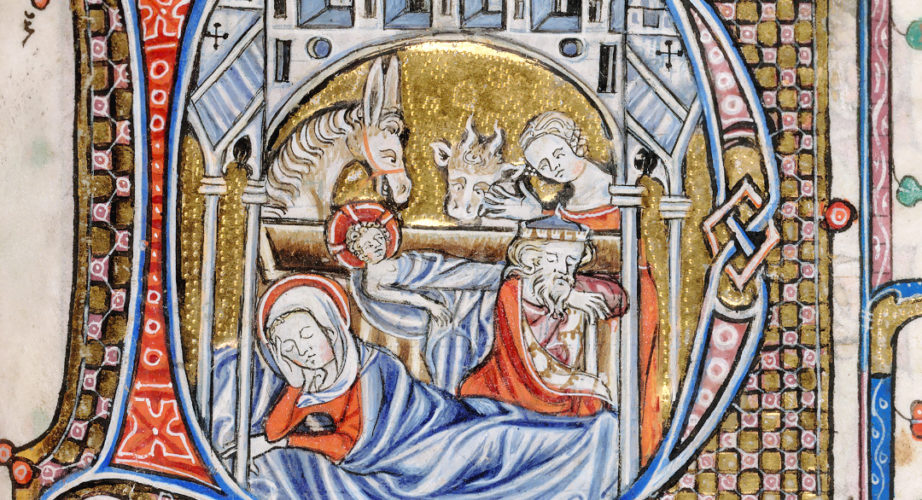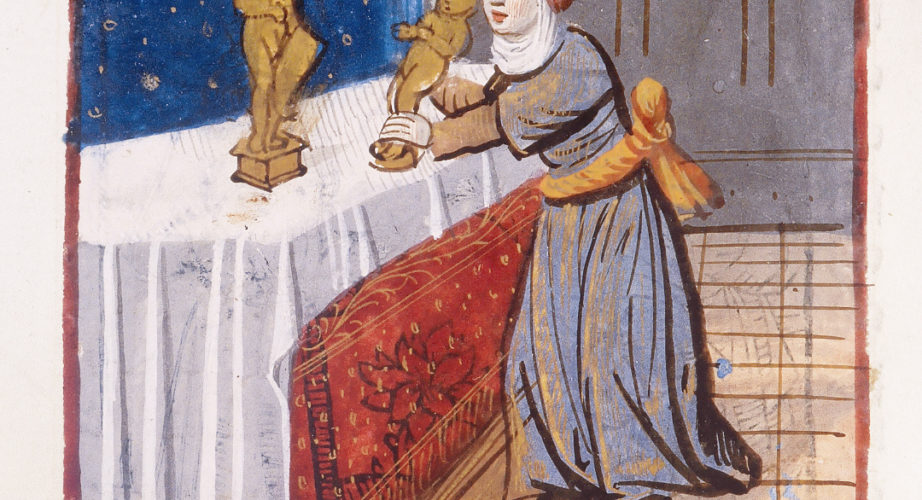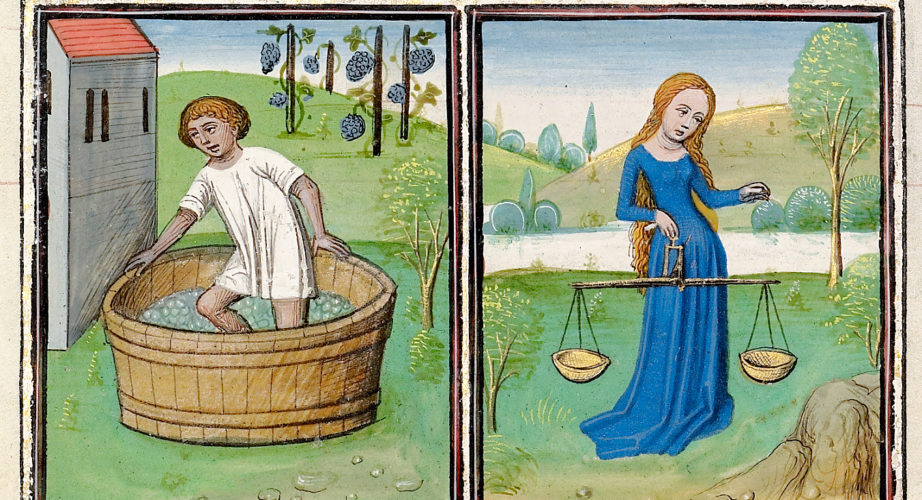Murder in the Cathedral
On December 29, 1170, the English Archbishop Thomas Becket was murdered in Canterbury Cathedral. Becket, having been martyrized by the King's men due to conflicts over the rights of the Church under the reign of Henry II, quickly became an incredibly popular figure among all Christians: soon after his death, in fact, Canterbury Cathedral and the Saint's shrine evolved into one of Europe's main pilgrimage destinations. Becket's shrine, being an important place of worship of Catholic history, was destroyed on orders from King Henry VIII during the Dissolution of the Monasteries in 1538; this was the very act that prompted the Pope to finally excommunicate the King.
During this time, Henry VIII also ordered the destruction of Becket's bones and had all records of his name and image obliterated. The miniature above, included in a Book of Hours, is an example of this erasure: the Saint's face was mostly lifted and the text was stuck through. You can read more on this in this article by Sarah J Biggs.
Due to the events and conflicts with King Henry II leading up to his martyrdom, Thomas Becket also became a symbol of resistance to political oppression of personal beliefs. T.S. Eliot's drama Murder in the Cathedral (1935), most famously, exploits the Saint's figure to highlight the importance of the individual's opposition to absolute authority during the times of rising Fascism and Nationalism across Europe.
"Thomas Becket", illumination from the manuscript "Book of Hours, Use of Sarum", ms. Harley 2900, f. 56v, c. 1430- c. 1440, British Library, London.
Two sleepy parents and a very awake Child... in a way, this Nativity…
On September 30, the Church celebrates the feast day of St. Rachel, Jacob's…
Da oggi (precisamente alle 8.50 italiane!), con l'ingresso del Sole nella costellazione della…



